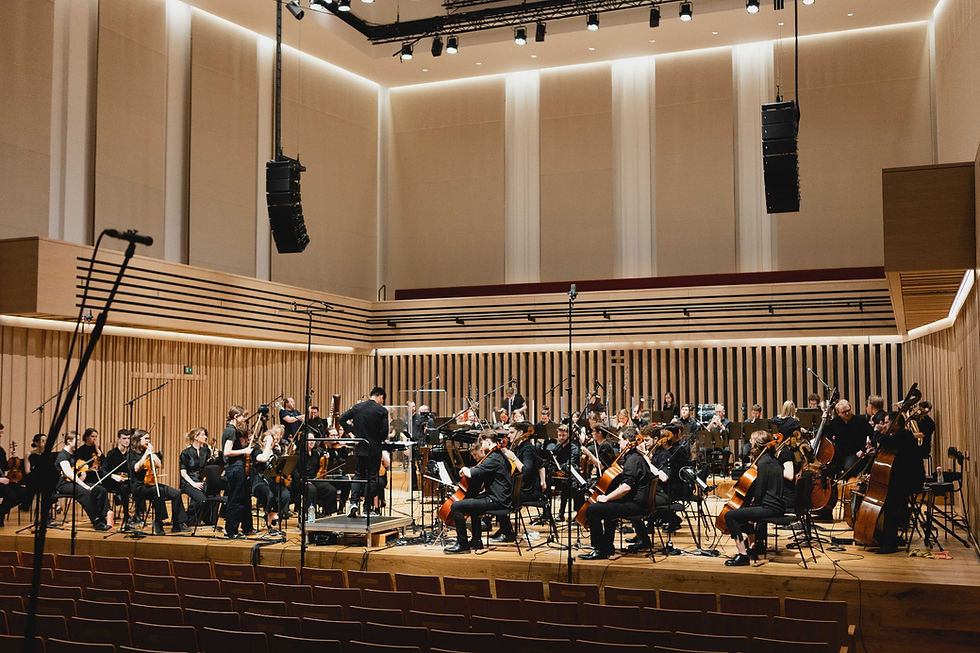GUEST ARTICLE: 5 Alternative Playing Techniques For Strings - James Weatherly-Buss.
- Jack Hughes
- Feb 13, 2023
- 2 min read
Updated: Feb 24, 2023
The string section of an orchestra has an incredible range of sounds available to composers, many of which aren’t immediately obvious.
Below are five alternative playing techniques to the ‘standard’ instrumental style than you can add into your writing for a more varied musical colour palette when scoring a film or writing stand-alone concert works.
See below each descriptor for a recommended concert piece by a 20th century composer that serves as a good showcase for that particular technique.

1 - Overpressure bowing
By applying more pressure than normal to the strings when bowing, the produced sound of a string instrument can be distorted to varying degrees, reducing the level of clear pitch in the timbre and increasing the amount of noise. This is a particularly dramatic sound that’s great for a burst of energy in a piece.

As heard in ‘Nymphea Reflection’ by Kaija Saariaho.
2 - Col legno battuto
Striking the strings with the wood of the bow creates an intimate percussive sound that can be used in a variety of contexts – evocative of sounds of footsteps at low pitches and quiet dynamics and sounds of insects for the reverse.
As heard in ‘Endless Steps’ by Ondřej Adámek.
3 - Harmonics
A very common technique, often used to great effect in sectional writing to create a ‘shimmering’ background texture. Natural harmonics ring clearly, while artificial harmonics have a less stable timbre that can work well to convey a subtle tension.

As heard in ‘Dreaming’ by Anna Thorvaldsdottir.
4 - Snap pizzicato
A more aggressive percussive sound than col legno battuto, snap pizzicato means to pluck the string by pulling it away from the fingerboard and letting it ‘snap’ back. A single snap pizzicato is particularly effective at highlighting moments of impact in a film scene, especially if the whole string section plays in unison.

As heard in ‘Music for strings, percussion and celesta’ by Béla Bartók.
5 - Desynchronised glissandi
Glissando is a standard string technique for the most part, but dividing the string section into smaller groups and assigning each group different start notes, end notes and rates of movement for the glissando creates a much more dense texture – often used to create suspense with great effect.
As heard in ‘Metastaseis’ by Iannis Xenakis.
We hope these five playing techniques for string section are an inspiring springboard for future works for string ensemble or orchestra!
Stay tuned for more tips for composers, as well as future interviews with professional composers working with the Northern Film Orchestra.
This blog post was written by composer James Weatherly-Buss.
Contact - jack@northernfilmorchestra.com
Soundcloud - https://soundcloud.com/nforchestra
Twitter - https://twitter.com/NFOrchestra




Comments